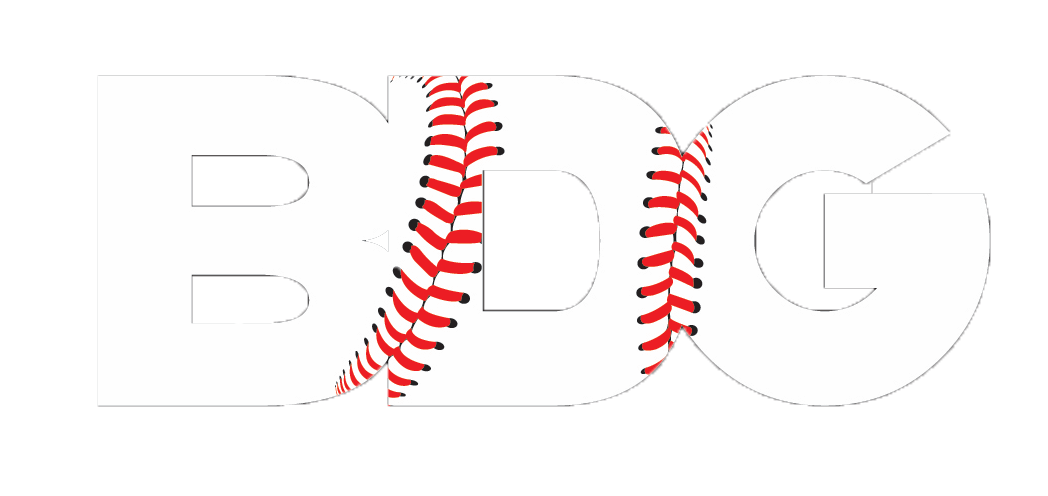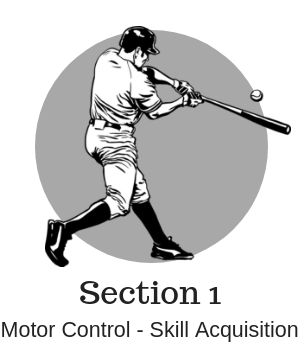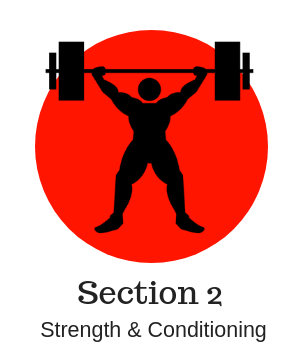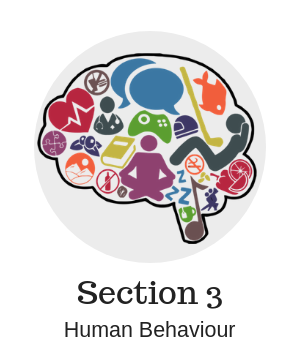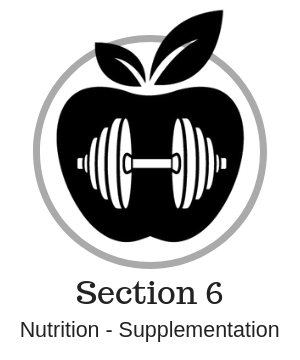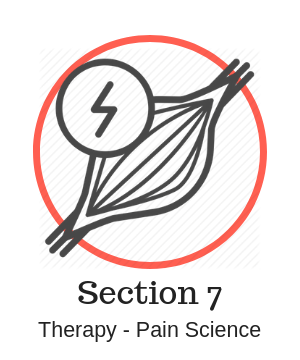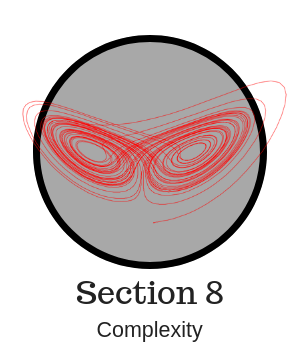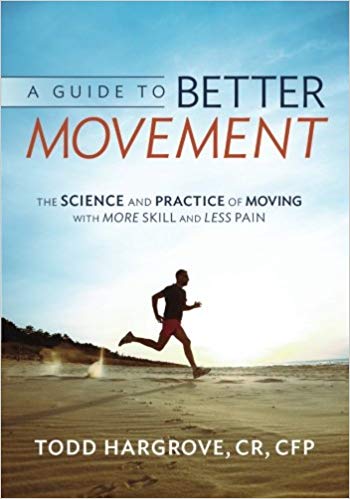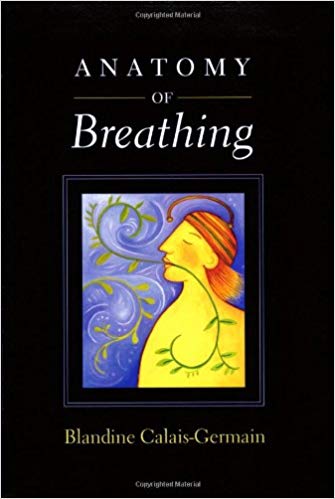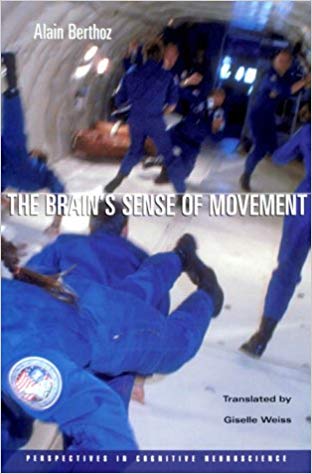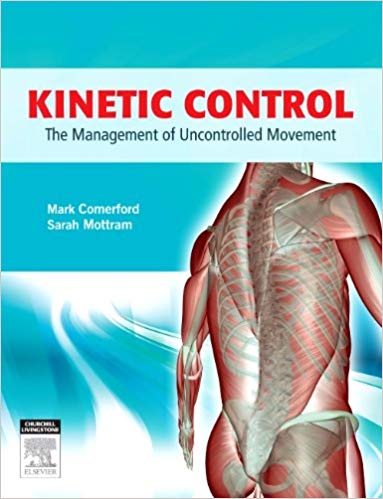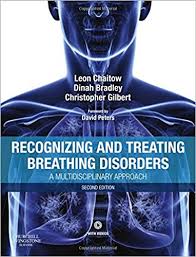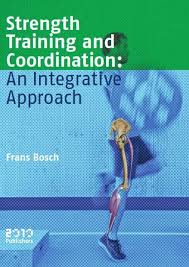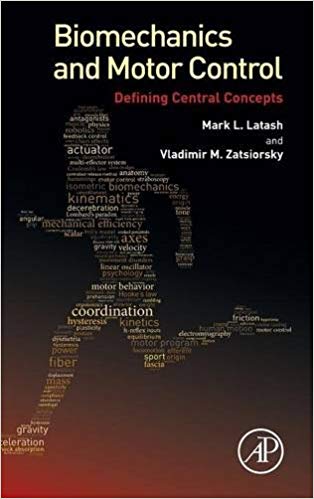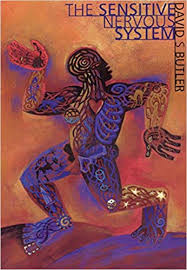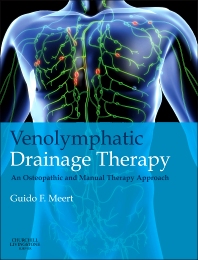BASEBALL RESOURCE GUIDE
Expand your web of knowledge
GOOD NEWS! We’ve already done everything for you. We’ve gathered some of our favourite non-specific baseball resources and put them all into one place.

*This post contains affiliate links. For more information, see our disclosures here.
Want the PDF version instead?
SECTION 5:
Movement – Biomechanics

START HERE
START HERE
Neuromechanics of Human Movement
Roger Enoka
Everyone needs a solid reference textbook for a general field, and mine is Enoka’s Neuromechanics. Rather than sifting through blog posts and attempting to pick up pieces of the biomechanics language over time, I think it would serve coaches well to dedicate a couple months directly studying this text.
Neuromechanics of Human Movement
Roger Enoka
Everyone needs a solid reference textbook for a general field, and mine is Enoka’s Neuromechanics. Rather than sifting through blog posts and attempting to pick up pieces of the biomechanics language over time, I think it would serve coaches well to dedicate a couple months directly studying this text.
A Guide to Better Movement
Todd Hargrove
Reading this early on as a student opened a lot of doors for me. The pain science realm, complexity, variability and a host of other interesting topics are covered. Todd’s an excellent communicator as evidenced by how well he simplifies these concepts. If you are on the fence, try heading over to his blog, Better Movement, and you’ll find yourself some gold.
A Guide to Better Movement
Todd Hargrove
Reading this early on as a student opened a lot of doors for me. The pain science realm, complexity, variability and a host of other interesting topics are covered. Todd’s an excellent communicator as evidenced by how well he simplifies these concepts. If you are on the fence, try heading over to his blog, Better Movement, and you’ll find yourself some gold.
Anatomy of Breathing
Blandine Calais-Germain
If you’re looking for a beginner’s introduction to breathing, and something that takes little more than a few hours, then I’d recommend starting with Anatomy of Breathing. It’s written for the lay person, easily shareable to athletes, and covers the basics of breathing with beautiful drawings and pictures. You won’t learn the significance of the Bohr Effect but you will improve your understanding of the topic.
Anatomy of Breathing
Blandine Calais-Germain
If you’re looking for a beginner’s introduction to breathing, and something that takes little more than a few hours, then I’d recommend starting with Anatomy of Breathing. It’s written for the lay person, easily shareable to athletes, and covers the basics of breathing with beautiful drawings and pictures. You won’t learn the significance of the Bohr Effect but you will improve your understanding of the topic.
NEXT STEPS
NEXT STEPS
The Brain’s Sense of Movement
Alain Berthoz
Berthoz describes how humans perceive and control movement, navigates our predictive and projective nature, and answers questions like “What if Newton Had Wanted to Catch the Apple?” as sections of his book. This is a bit of a dense read, but certainly attainable if you have a science background. It’s a fascinating look into the perception-action world that I haven’t seen mentioned in my circles, and I’m not quite sure why. .
The Brain’s Sense of Movement
Alain Berthoz
Berthoz describes how humans perceive and control movement, navigates our predictive and projective nature, and answers questions like “What if Newton Had Wanted to Catch the Apple?” as sections of his book. This is a bit of a dense read, but certainly attainable if you have a science background. It’s a fascinating look into the perception-action world that I haven’t seen mentioned in my circles, and I’m not quite sure why. .
Kinetic Control: The Management of Uncontrolled Movement
Comerford, Mottram
This book came highly recommended a long time ago by Dr. Michael Chivers, and at the time I wasn’t wise enough to fully grasp its importance. A few years afterwards, while attempting to recall an amazing figure depicting the movement system, it dawned on me that I needed to go back to Kinetic Control for round two. Don’t be fooled you, this textbook has hundreds of pages of depth on joint movement, assessing it, and how to correct it.
Kinetic Control: The Management of Uncontrolled Movement
Comerford, Mottram
This book came highly recommended a long time ago by Dr. Michael Chivers, and at the time I wasn’t wise enough to fully grasp its importance. A few years afterwards, while attempting to recall an amazing figure depicting the movement system, it dawned on me that I needed to go back to Kinetic Control for round two. Don’t be fooled you, this textbook has hundreds of pages of depth on joint movement, assessing it, and how to correct it.
Recognizing and Treating Breathing Disorders
Chaitow, Bradley, Gilbert
I spent a lot of time considering breathing and its role in health & performance while studying at chiropractic school. It’s a topic that is covered in, or central to, a lot of the dominant continuing education courses in the therapy & performance world. If you’re at all interested in breathing, the physiology, anatomy, and downstream consequences, then this is certainly a great place to start.
Recognizing and Treating Breathing Disorders
Chaitow, Bradley, Gilbert
I spent a lot of time considering breathing and its role in health & performance while studying at chiropractic school. It’s a topic that is covered in, or central to, a lot of the dominant continuing education courses in the therapy & performance world. If you’re at all interested in breathing, the physiology, anatomy, and downstream consequences, then this is certainly a great place to start.
DEEPER DIVE
DEEPER DIVE
Strength Training and Coordination: An Integrative Approach
Frans Bosch
I had a hard time deciding where to place this one but it ended up here because it’s much more than a strength & conditioning book. If you’re willing to get a bit outside of your comfort zone (you should) then diving into Frans Bosch’s latest book is a must. Exposure to his ideas on coordination and strength training, muscle slack, finding attractors, among others, will challenge your coaching philosophies. This of course, is not a bad thing.
Strength Training and Coordination: An Integrative Approach
Frans Bosch
I had a hard time deciding where to place this one but it ended up here because it’s much more than a strength & conditioning book. If you’re willing to get a bit outside of your comfort zone (you should) then diving into Frans Bosch’s latest book is a must. Exposure to his ideas on coordination and strength training, muscle slack, finding attractors, among others, will challenge your coaching philosophies. This of course, is not a bad thing.
Biomechanics and Motor Control
Latash, Zatsiorsky
This is a graduate level textbook that is a tough read even if you have a science background. It’s something you’d probably only want to tackle if you’ve got a decent grasp on everything else (Neuromechanics included). It gets into the depth on the topics of neurophysiology, motor abundancy and redundancy, postural control, and more. Again, it’s DENSE.
Biomechanics and Motor Control
Latash, Zatsiorsky
This is a graduate level textbook that is a tough read even if you have a science background. It’s something you’d probably only want to tackle if you’ve got a decent grasp on everything else (Neuromechanics included). It gets into the depth on the topics of neurophysiology, motor abundancy and redundancy, postural control, and more. Again, it’s DENSE.
ARTICLES & POSTS
The proprioceptive senses: their roles in signaling body shape, body position and movement, and muscle force – Proske, Gandevia (2004)
Ethological Action Maps: A paradigm shift for the motor cortex – Graziano (2016)
Coordinative Variability and Overuse Injury – Hammill et al (2014)
The Interface of Biomechanics and Motor Control – Paul Glazier (Open Access Chapter)
Brain Spill #2: Thoughts on Movement – Dave Tilley
An Objective Biomechanics Model for Better Program Design – Pat Davidson
The Complexity of Biomechanics – Todd Hargrove
The Altis Kinogram Method – Simplifaster
ARTICLES & POSTS
The proprioceptive senses: their roles in signaling body shape, body position and movement, and muscle force – Proske, Gandevia (2004)
Ethological Action Maps: A paradigm shift for the motor cortex – Graziano (2016)
Coordinative Variability and Overuse Injury – Hammill et al (2014)
The Interface of Biomechanics and Motor Control – Paul Glazier (Open Access Chapter)
Brain Spill #2: Thoughts on Movement – Dave Tilley
An Objective Biomechanics Model for Better Program Design – Pat Davidson
The Complexity of Biomechanics – Todd Hargrove
The Altis Kinogram Method – Simplifaster
SECTION 6:
Nutrition – Supplementation

RESOURCES
RESOURCES
The Essentials of Sport and Exercise Nutrition Certification Manual
Precision Nutrition
Precision Nutritions textbook for their certification course (a great feather to add to your cap ). It’s a textbook with all of the relevant information that you’d want to feel comfortable giving nutritional advice to players.
The Essentials of Sport and Exercise Nutrition Certification Manual
Precision Nutrition
Precision Nutritions textbook for their certification course (a great feather to add to your cap ). It’s a textbook with all of the relevant information that you’d want to feel comfortable giving nutritional advice to players.

Examine.com
Website
Got questions about supplementation or nutrition and want unbiased and research-based information? Examine is a website where you can literally key-in a supplement and then get all the background information you’d ever want about it. That includes the totality of scientific literature on it, the level of evidence supporting its efficacy (or lack thereof), some recommended guidelines and much more.

Examine.com
Website
Got questions about supplementation or nutrition and want unbiased and research-based information? Examine is a website where you can literally key-in a supplement and then get all the background information you’d ever want about it. That includes the totality of scientific literature on it, the level of evidence supporting its efficacy (or lack thereof), some recommended guidelines and much more.
WEBSITES
Body Recomposition – Lyle McDonald
I feel like quite a few people end up in a Lyle MacDonald phase where they rip through a ton of his books, articles, and posts. He’s got a book on almost every topic that you can think of, from Protein to the Ketogenic diet, and his writing style and honesty hook you in. His blog posts and research reviews span back to 2009, so you’ve got an encyclopedia of information to look at.
Precision Nutrition Created by John Berardi, Precision Nutrition (PN) is one of the top nutritional websites in the world and does a remarkable job at simplifying the complex. PN has certification courses, hundreds of blog posts, videos, and overall content that make it a must frequent resource for the baseball world.
OTHER SOURCES TO FOLLOW
Stu Phillips, PhD One of the most respected researchers in the field. Recently co-authored this massive systematic review on protein supplementation that cut through a lot of the common misconceptions.
Alan Aragon Been following his stuff for a number of years, leaning on his monthly research review a few years back. It’s only $10 / month.
Marc Bubbs Dr. Marc Bubbs is the Director of Nutrition for the Canadian Men’s Basketball Team and hosts a fantastic podcast.
WEBSITES
Body Recomposition – Lyle McDonald
I feel like quite a few people end up in a Lyle MacDonald phase where they rip through a ton of his books, articles, and posts. He’s got a book on almost every topic that you can think of, from Protein to the Ketogenic diet, and his writing style and honesty hook you in. His blog posts and research reviews span back to 2009, so you’ve got an encyclopedia of information to look at.
Precision Nutrition Created by John Berardi, Precision Nutrition (PN) is one of the top nutritional websites in the world and does a remarkable job at simplifying the complex. PN has certification courses, hundreds of blog posts, videos, and overall content that make it a must frequent resource for the baseball world.
OTHER SOURCES TO FOLLOW
Stu Phillips, PhD One of the most respected researchers in the field. Recently co-authored this massive systematic review on protein supplementation that cut through a lot of the common misconceptions.
Alan Aragon Been following his stuff for a number of years, leaning on his monthly research review a few years back. It’s only $10 / month.
Marc Bubbs Dr. Marc Bubbs is the Director of Nutrition for the Canadian Men’s Basketball Team and hosts a fantastic podcast.
SECTION 7:
Therapy – Pain Science

START HERE
START HERE

Recovery Strategies: You Pain Guidebook
Greg Lehman
Every coach, parent, player and human being should pick up this free eBook and go through it. Unfortunately, pain is so engrained in the culture of baseball that we often see players take pre-emptive Advils or think it’s cool to get into the “Tommy John Club.” Whether you are suffering from elbow pain after pitching or are one of the millions of people living in chronic pain, this resource is a must-read.

Recovery Strategies: You Pain Guidebook
Greg Lehman
Every coach, parent, player and human being should pick up this free eBook and go through it. Unfortunately, pain is so engrained in the culture of baseball that we often see players take pre-emptive Advils or think it’s cool to get into the “Tommy John Club.” Whether you are suffering from elbow pain after pitching or are one of the millions of people living in chronic pain, this resource is a must-read.
Atlas of Functional Shoulder Anatomy
Edited by Giacomo, Pouliart, Costantini, de Vita
Everyone needs a textbook on anatomy. The problem with most textbooks, however, is that their depiction of what’s underneath the hood is often a misrepresentation of sorts. Muscles, tendons, ligaments (and all tissues, really) aren’t discrete entities, disconnected from their neighbours. What can happen when learning exclusively from these textbooks is that we begin to think as a reductionist – a problematic perspective when attempting to solve complexity. Rather, I think it’s a far better idea to find anatomy texts that showcase the interconnectedness of the human body. If you’ve spent any significant time in a cadaver lab, you’re probably not the person sitting on social media arguing about isolated muscle loading or dismissing the importance of serially aligned connective tissue. Atlas of Functional Shoulder Anatomy does an incredible job of walking through the shoulder complex, explaining the anatomy and clinical significance, all while keeping things connected. Where else are you going to find an anatomy textbook that highlights the subscapularis tendon interdigitating with the supraspinatus tendon?
Atlas of Functional Shoulder Anatomy
Edited by Giacomo, Pouliart, Costantini, de Vita
Everyone needs a textbook on anatomy. The problem with most textbooks, however, is that their depiction of what’s underneath the hood is often a misrepresentation of sorts. Muscles, tendons, ligaments (and all tissues, really) aren’t discrete entities, disconnected from their neighbours.
What can happen when learning exclusively from these textbooks is that we begin to think as a reductionist – a problematic perspective when attempting to solve complexity. Rather, I think it’s a far better idea to find anatomy texts that showcase the interconnectedness of the human body. If you’ve spent any significant time in a cadaver lab, you’re probably not the person sitting on social media arguing about isolated muscle loading or dismissing the importance of serially aligned connective tissue.
Atlas of Functional Shoulder Anatomy does an incredible job of walking through the shoulder complex, explaining the anatomy and clinical significance, all while keeping things connected. Where else are you going to find an anatomy textbook that highlights the subscapularis tendon interdigitating with the supraspinatus tendon?
Explain Pain
Moseley, Butler
I was very fortunate to be recommended this book early on in my chiropractic degree. Explain Pain lays out the fundamentals of pain science at a level easily digestible for the general population. I’ve been saying it for a while but with the significant percentage of players struggling with pain / discomfort each season, the baseball community desperately needs to understand these pain science concepts.
Explain Pain
Moseley, Butler
I was very fortunate to be recommended this book early on in my chiropractic degree. Explain Pain lays out the fundamentals of pain science at a level easily digestible for the general population. I’ve been saying it for a while but with the significant percentage of players struggling with pain / discomfort each season, the baseball community desperately needs to understand these pain science concepts.
NEXT STEPS
NEXT STEPS
The Sensitive Nervous System
David Butler
This text is more technical than Explain Pain but does an excellent job conceptualizing nociception, pain, and neurodynamics. The first four chapters on the theory and physiology are worth the price alone while the second half is more of an entry point for practical application. Overall, if you’re looking to go deeper down the pain hole, it’s a pretty good follow up. Or, if you’re a therapist, I’d recommend checking out Butler’s course Mobilization of the Nervous System. .
The Sensitive Nervous System
David Butler
This text is more technical than Explain Pain but does an excellent job conceptualizing nociception, pain, and neurodynamics. The first four chapters on the theory and physiology are worth the price alone while the second half is more of an entry point for practical application. Overall, if you’re looking to go deeper down the pain hole, it’s a pretty good follow up. Or, if you’re a therapist, I’d recommend checking out Butler’s course Mobilization of the Nervous System. .
The Athlete’s Shoulder
Wilk, Reinold, Andrews
If you’re a therapist working with overhead athletes, this book is a must-purchase. I remember carrying it around with me in chiropractic school, taking in the information as often as I could. I still find myself referring to it regularly and think it’s an invaluable resource (although probably a bit too dense for the lay coach, player or parent). .
The Athlete’s Shoulder
Wilk, Reinold, Andrews
If you’re a therapist working with overhead athletes, this book is a must-purchase. I remember carrying it around with me in chiropractic school, taking in the information as often as I could. I still find myself referring to it regularly and think it’s an invaluable resource (although probably a bit too dense for the lay coach, player or parent). .
DEEPER DIVE
DEEPER DIVE
Fascia: The Tensional Network of the Human Body
Edited by Schleip, Findlay, Chaitow, Huijing
My go-to resource when it comes to fascia, connective tissue, and its potential implications to therapy and performance. This book is loaded with chapters dedicated to the neurophysiology, mechanical properties, applications and more, written by the foremost experts in the field. One thing that I highly recommend checking out is the last few chapters on practical applications and the theory behind them — do some critical thinking and decide for yourself what that soft tissue work is accomplishing!
Fascia: The Tensional Network of the Human Body
Edited by Schleip, Findlay, Chaitow, Huijing
My go-to resource when it comes to fascia, connective tissue, and its potential implications to therapy and performance. This book is loaded with chapters dedicated to the neurophysiology, mechanical properties, applications and more, written by the foremost experts in the field. One thing that I highly recommend checking out is the last few chapters on practical applications and the theory behind them — do some critical thinking and decide for yourself what that soft tissue work is accomplishing!
Venolympathic Drainage Therapy
Guido Meert
Don’t let the title fool you, this book is much more than just ‘drainage therapy’. Meert comprehensively explores the fluid systems in the body, their ecosystem, interactions, and some practical approaches to affecting it. It goes into detail on connective tissue, cell and tissue respiration, assessing and treating the diaphragms and much, much more. When most of our bodies are made up of fluid, it’s probably a good idea to brush up on their dynamics. This text is probably only relevant if you’re a therapist.
Venolympathic Drainage Therapy
Guido Meert
Don’t let the title fool you, this book is much more than just ‘drainage therapy’. Meert comprehensively explores the fluid systems in the body, their ecosystem, interactions, and some practical approaches to affecting it. It goes into detail on connective tissue, cell and tissue respiration, assessing and treating the diaphragms and much, much more. When most of our bodies are made up of fluid, it’s probably a good idea to brush up on their dynamics. This text is probably only relevant if you’re a therapist.
ARTICLES & POSTS
The Neuromatrix of Pain – Melzack (2001)
Stress Sonography of the Ulnar Collateral Ligament of the Elbow in Professional Baseball Pitchers – Ciccotti et al. (2014)
Elbow MRI Findings Do Not Correlate with Future Placement on the Disabled List in Asymptomatic Professional Baseball Players – Gutierrez et al (2017)
Glenohumeral Findings on Magnetic Resonance Imaging Correlate with Innings Pitched in Asymptomatic Pitchers – Lesniak et al (2013)
Shoulder MRI Abnormalities in Asymptomatic Little League Baseball Players – Pennock et al (2018)
Magnetic Resonance Imaging of the Throwing Elbow in Uninjured, High-School aged Baseball Pitcher – Hurd et al (2011)
Upper Extremity Physeal Injury in Young Baseball Pitchers – Review: Saltzman et al (2014)
Consensus Statement: Fascial Tissue Research in Sports Medicine: From Molecules to Tissue Adaptation, Injury and Diagnostics – Martina Zügel (2018)
Mechanotherapy: How Physical Therapists Prescription of Exercise Promotes Tissue Repair – Khan et al (2016)
Revisiting the continuum model of tendon pathology: what is its merit in clinical practice and research? Cook et al (2016)
ARTICLES & POSTS
The Neuromatrix of Pain – Melzack (2001)
Stress Sonography of the Ulnar Collateral Ligament of the Elbow in Professional Baseball Pitchers – Ciccotti et al. (2014)
Elbow MRI Findings Do Not Correlate with Future Placement on the Disabled List in Asymptomatic Professional Baseball Players – Gutierrez et al (2017)
Glenohumeral Findings on Magnetic Resonance Imaging Correlate with Innings Pitched in Asymptomatic Pitchers – Lesniak et al (2013)
Shoulder MRI Abnormalities in Asymptomatic Little League Baseball Players – Pennock et al (2018)
Magnetic Resonance Imaging of the Throwing Elbow in Uninjured, High-School aged Baseball Pitcher – Hurd et al (2011)
Upper Extremity Physeal Injury in Young Baseball Pitchers – Review: Saltzman et al (2014)
Consensus Statement: Fascial Tissue Research in Sports Medicine: From Molecules to Tissue Adaptation, Injury and Diagnostics – Martina Zügel (2018)
Mechanotherapy: How Physical Therapists Prescription of Exercise Promotes Tissue Repair – Khan et al (2016)
Revisiting the continuum model of tendon pathology: what is its merit in clinical practice and research? Cook et al (2016)
SECTION 8:
Complexity

START HERE
START HERE
Thinking in Systems
Donella Meadows
This is the best place to start learning about complexity and systems. The late Donella Meadows makes the concepts of feedback loops, self-organization, and emergence easily accessible to the general population. With diagrams and real world examples, Thinking in Systems will leave you with a solid background to progress forward.
Thinking in Systems
Donella Meadows This is the best place to start learning about complexity and systems. The late Donella Meadows makes the concepts of feedback loops, self-organization, and emergence easily accessible to the general population. With diagrams and real world examples, Thinking in Systems will leave you with a solid background to progress forward.
Chaos
James Gleick
This is a classic written by an exceptional author, that investigates the nature and history of Chaos Theory. From Lorenz and the Butterfly Effect to the discovery of fractals, Gleick’s story telling is engaging and accessible to both beginners and non-scientists. It’s not a quick read by any means but it serves an important role in expanding our perspective on complexity.
Chaos
James Gleick
This is a classic written by an exceptional author, that investigates the nature and history of Chaos Theory. From Lorenz and the Butterfly Effect to the discovery of fractals, Gleick’s story telling is engaging and accessible to both beginners and non-scientists. It’s not a quick read by any means but it serves an important role in expanding our perspective on complexity.
NEXT STEPS
NEXT STEPS
Complex Systems in Sport
Edited by Hristovski, Davids, Araujo, Serre, Button, Passos
This textbook brings together some of the worlds experts studying complex systems in the context of the sporting environment. Ecological and coordination dynamics, perception-action, creativity and emergence and variability are among some of the many concepts reviewed. As with any of the Routledge books in here, it’s dense, chalk full of researchers to follow, and worth every penny of the purchase. .
Complex Systems in Sport
Edited by Hristovski, Davids, Araujo, Serre, Button, Passos
This textbook brings together some of the worlds experts studying complex systems in the context of the sporting environment. Ecological and coordination dynamics, perception-action, creativity and emergence and variability are among some of the many concepts reviewed. As with any of the Routledge books in here, it’s dense, chalk full of researchers to follow, and worth every penny of the purchase. .
Complexity: A Guided Tour
Melanie Mitchell
In Complexity: A Guided Tour, the external professor from the Sante Fe Institute overviews the general principles of the theory. Drawing from several disciplines and examples, such as ant colonies and the immune system, Mitchell gets into the basics; chaos, emergence, and entropy.
Complexity: A Guided Tour
Melanie Mitchell
In Complexity: A Guided Tour, the external professor from the Sante Fe Institute overviews the general principles of the theory. Drawing from several disciplines and examples, such as ant colonies and the immune system, Mitchell gets into the basics; chaos, emergence, and entropy.
DEEPER DIVE
DEEPER DIVE
Simplexity: Simplifying Principles for a Complex World
Alain Berthoz
This book rocked me pretty good – even on the second time through. Berthoz, already mentioned previously in this list, does his best to breakdown the key elements of complexity theory and link them to simplicity. In doing so, he outlines his argument for the derivation of ‘simplexity’ or the set of solutions that beings use to navigate the complexity of the past and the future. This one is tough… but totally worth digging into.
Simplexity: Simplifying Principles for a Complex World
Alain Berthoz This book rocked me pretty good – even on the second time through. Berthoz, already mentioned previously in this list, does his best to breakdown the key elements of complexity theory and link them to simplicity. In doing so, he outlines his argument for the derivation of ‘simplexity’ or the set of solutions that beings use to navigate the complexity of the past and the future. This one is tough… but totally worth digging into.
COMPLEXITY EXPLORER – free course on complexity
If you’re still interested in learning more about complexity and systems theory, then I’d recommend checking out the free course hosted on Complexity Explorer by Melanie Mitchell. The course has quizzes, discussion forums, and welcomes open dialogue to further the education process.
VIDEOS
Chaos and Reductionism – Robert Sapolsky
Emergence and Complexity – Robert Sapolsky
ARTICLES & POSTS
Complex Systems Approach for Sports Injuries – Bittencourt et al (2016)
A Systems Perspective on Chronic Pain – Todd Hargrove
Dynamic Systems Theory – Esther Thelen (Open Access Chapter)
COMPLEXITY EXPLORER – free course on complexity
If you’re still interested in learning more about complexity and systems theory, then I’d recommend checking out the free course hosted on Complexity Explorer by Melanie Mitchell. The course has quizzes, discussion forums, and welcomes open dialogue to further the education process.
VIDEOS
Chaos and Reductionism – Robert Sapolsky
Emergence and Complexity – Robert Sapolsky
ARTICLES & POSTS
Complex Systems Approach for Sports Injuries – Bittencourt et al (2016)
A Systems Perspective on Chronic Pain – Todd Hargrove
Dynamic Systems Theory – Esther Thelen (Open Access Chapter)
Why should you care learning about other topics?
Why should you care learning about other topics?
Yes, you may just be a person working within a specific performance silo – like a pitching coach or a therapist – but whatever it is that you’re trying to accomplish is inevitably inseparable from everything else.
There is no true isolation.
Let’s say you’re attempting to address a pitcher’s lead leg stability with some new drill work. You’re really honed into their movement in the warm-up, your cuing strategy, and altering the task constraints, but the athlete is still not improving.
What’s the next move or line of thought?
“I have yet to see any problem, however complicated, which, when looked at in the right way, did not become still more complicated” – Poul Anderson
Human biology, and performance, is an insanely complex system. And a complex system is much more than just a collection of cells.
It’s more than the sum of its parts.
A system consists of three kinds of things: elements, interconnections, and a function. Elements of a baseball pitcher, for example, could be their muscle fibres, joints, emotions, bone structure, among many other possibilities. In fact, once you start getting into the process of identifying the elements, you’ll start to see that there are sub-elements. And that these sub-elements have their own sub-elements. And so on, and so forth.
As the late Donella Meadows suggested in her book, Thinking in Systems,
“It’s a good idea to stop dissecting out elements and start looking for the interconnections, the relationships that hold the elements together.”
If we are going to be solving the problem of baseball performance (a systems problem), it would be wise to investigate how these elements are connected. What we don’t want to do is get so bogged within the elements that we lose sight of the system itself. “We don’t want to lose sight of the forest for the trees.”
It is with that in mind that I believe our efforts as coaches, therapists, strength coaches, and other members of the performance team shouldn’t be directed entirely towards our own elements. We want to master our domain, but simultaneously we should be expanding our web of knowledge so that we can better see the relationships between the elements.
As Edward O Wilson would argue, we are striving for consilience:
“A ‘jumping together’ of knowledge by the linking of facts and fact-based theory across disciplines to create a common groundwork of explanation.”
This is the model that we strive for at BDG.
Yes, you may just be a person working within a specific performance silo – like a pitching coach or a therapist – but whatever it is that you’re trying to accomplish is inevitably inseparable from everything else.
There is no true isolation.
Let’s say you’re attempting to address a pitcher’s lead leg stability with some new drill work. You’re really honed into their movement in the warm-up, your cuing strategy, and altering the task constraints, but the athlete is still not improving.
What’s the next move or line of thought?
“I have yet to see any problem, however complicated, which, when looked at in the right way, did not become still more complicated” – Poul Anderson
Human biology, and performance, is an insanely complex system. And a complex system is much more than just a collection of cells.
It’s more than the sum of its parts.
A system consists of three kinds of things: elements, interconnections, and a function. Elements of a baseball pitcher, for example, could be their muscle fibres, joints, emotions, bone structure, among many other possibilities. In fact, once you start getting into the process of identifying the elements, you’ll start to see that there are sub-elements. And that these sub-elements have their own sub-elements. And so on, and so forth.
As the late Donella Meadows suggested in her book, Thinking in Systems,
“It’s a good idea to stop dissecting out elements and start looking for the interconnections, the relationships that hold the elements together.”
If we are going to be solving the problem of baseball performance (a systems problem), it would be wise to investigate how these elements are connected. What we don’t want to do is get so bogged within the elements that we lose sight of the system itself. “We don’t want to lose sight of the forest for the trees.”
It is with that in mind that I believe our efforts as coaches, therapists, strength coaches, and other members of the performance team shouldn’t be directed entirely towards our own elements. We want to master our domain, but simultaneously we should be expanding our web of knowledge so that we can better see the relationships between the elements.
As Edward O Wilson would argue, we are striving for consilience:
“A ‘jumping together’ of knowledge by the linking of facts and fact-based theory across disciplines to create a common groundwork of explanation.”
This is the model that we strive for at BDG.
